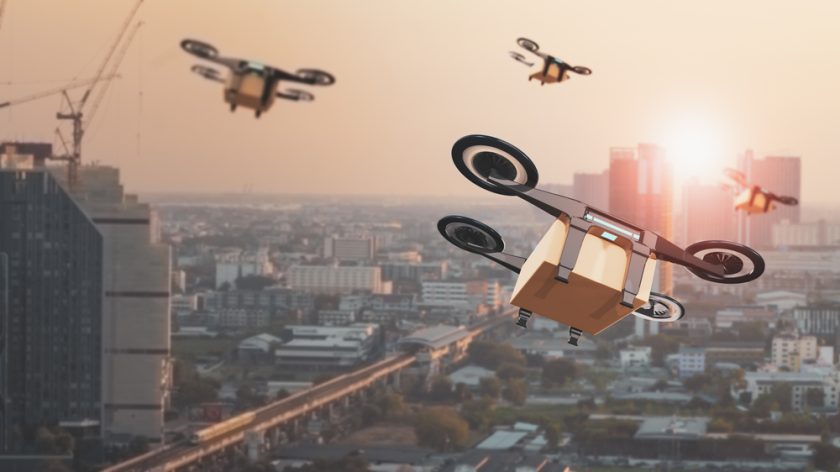Researchers at John Hopkins Institute for Assured Autonomy have completed a study to evaluate how to ensure the safe control of drone traffic by replacing human-involved processes with autonomous decision-making.
For every scenario, the team programmed algorithms to avoid collisions, a job too overwhelming for a human crew alone, according to an institute press release. But the efficacy of the regulatory system the FAA will eventually put in place demands a team effort, according to the university.
Co-authors Lanier Watkins, principal professional staff at the Johns Hopkins Applied Physics Laboratory, and Louis Whitcomb, professor of mechanical engineering at the Whiting School of Engineering, conducted a study to evaluate how to ensure the safe control of drone traffic by replacing human-involved processes with autonomous decision-making.
“It will not be human air-traffic controllers,” Whitcomb says. “It will be a computerized system that is not operated by the FAA. They envision commercial providers doing this. The idea is to automate traffic management and to do it at a scale that we can barely even conceive of today.”
The study by Whitcomb and Watkins piggybacks on work that Watkins’ APL team has conducted for 10-plus years. The new study, Watkins says, goes a few steps further, using a 3D simulator with noisy sensors that anticipates the autonomous aspect of future drones and applies AI algorithms (and AI assurance) to various inevitable and unexpected occurrences, such as mountainous terrain and skyscrapers, last-minute changes to flight schedules, and the sudden appearance of a flock of birds or a rogue drone.
“We also added a procedure to analyze the decisions made by the autonomy [or nonhuman] algorithms,” Watkins says. “All these things together — that’s where the novelty comes in.”
The institute references FAA forecasts that predict by 2027 close to 1 million commercial drones in total will be in operation, doing everything from delivering pizzas and packages to assisting in emergency response, and is developing a plan to manage the upsurge. But, as the Hopkins study notes, it will be the first time the agency provides the equivalent of air-traffic control in that airspace, which is 400 feet or below. And at the moment, it does not have the human capacity to handle the job.
“I’m sure there will be growing pains associated with this,” Whitcomb acknowledges. But air transport is a “giant engine of our economy,” he says, making the increase inevitable. The challenge for the FAA is maintaining balance. “It’s like medicine,” Whitcomb adds. “You want safety and you want efficacy.”
(Image: Shutterstock)
For more information
https://hub.jhu.edu/magazine/2023/winter/air-traffic-control-for-drones/




